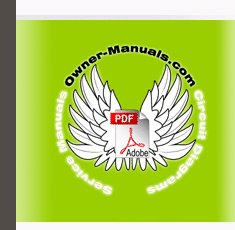|
|
|
Categories
|
|
Information
|
|
Featured Product
|
|
|
 |
|
|
There are currently no product reviews.
 ;
Full Panasonic service Manual, as described, no problems
 ;
This place is amazing. Got our manual in a few hours. Print quality is excellent. Even the manufacturer didn't have this manual. The price was excellent. How many more stars can I give them? More than satisfied.
 ;
This was a very hard to find manual. The unit is long discontinued and Pioneer doesn't retain every manual for every model. Thanks owner's-manual.com!
 ;
I'm so glad I was able to find a site to download my missing manuals. Very reasonable prices and they kept me informed about the process and I had my manual within less than a day. The only thing I wish was an option is a 100% English version with no spanish or anything. But overall great site.
 ;
The manual is complete with excellent quality! One suggestion, show number of pages and weather it is multi-lingual. The AD 600 Manuel is about 76 pages and over half is non English. This results in a larger print job than usually needed. Having this information, one could select the desired pages for printing.
Adding events to a track
There are a number of ways to add events to a track:
� � By recording (see page 43).
This is possible for audio and MIDI tracks.
By selecting �Audio File...� or �Video File...� from the Import submenu on the File menu.
This opens a file dialog, allowing you to locate the file you wish to import. When you import a file this way, a clip is created for the file and an event that plays the whole clip is added to the selected track, at the position of the project cursor. You can also import MIDI files by using the Import submenu, but this works in a slightly different way (see page 742).
� � �
By grabbing audio CD tracks and converting them to audio files (see page 749). By importing only the audio portion of a video file and converting it to an audio file (see page 718). By using Copy and Paste on the Edit menu.
This allows you to copy all kinds of events between projects. You can also copy events within the project, from the Audio Part Editor or Sample Editor.
�
By drawing.
Some types of events (markers and automation events) can be drawn directly into the Project window. For audio and MIDI tracks, you can draw parts (see page 121).
� � � � � � �
By dragging files and dropping them on the track at the desired position.
You can create events by dragging and dropping from the following locations:
�
The Desktop. The Pool. A Library (A Pool file that is not attached to a project). The Project window of another open project. The Audio Part Editor of any open project. The Sample Editor of any open project � press [Ctrl]/[Command] and drag to create an event of the current selection, or click in the left column of the region list and drag to create an event from a region. The �Find media� dialog.
While you drag the clip in the Project window, its position will be indicated by a marker line and a numerical position box. See also page 469.
The Project window
CUBASE SX/SL 5 � 119
|
|
 |
> |
|
